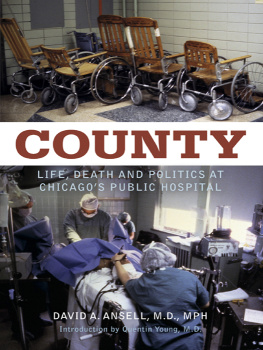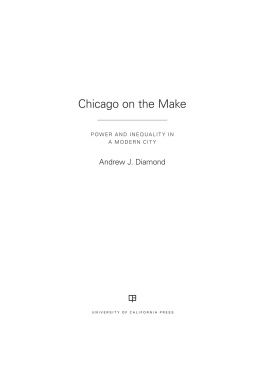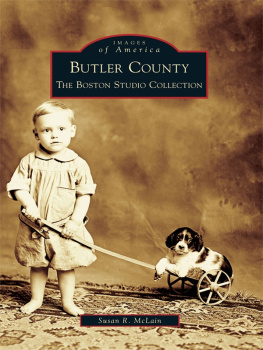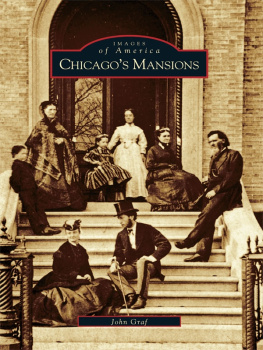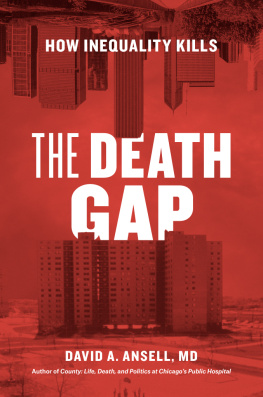COUNTY
COUNTY
LIFE, DEATH AND POLITICS AT CHICAGOS PUBLIC HOSPITAL
DAVID A. ANSELL, MD, MPH
A CADEMY C HICAGO P UBLISHERS
Published in 2011 by
Academy Chicago Publishers
363 West Erie Street
Chicago, Illinois 60654
2011 by David Ansell
Introduction 2011 by Quentin Young
Second edition.
Printed and bound in the U.S.A.
All rights reserved.
No part of this book may be reproduced in any form without
the express written permission of the publisher.
Pages 89: Cook County Hospital, 1914.
(Courtesy Cook County Health and Hospital System Archives)
Library of Congress Cataloging-in-Publication Data
Ansell, David, MD.
County : life, death, and politics at Chicagos public hospital / by David Ansell.
p. ; cm.
ISBN 978-0-89733-620-8 (hardcover : alk. paper)
ISBN 978-0-89733-632-1 (eBook)
1. Cook County Hospital (Chicago, Ill.)History. 2. County hospitalsIllinoisChicagoHistory. 3. PhysiciansChicagoAutobiography.
I. Title. [DNLM: 1. Cook County Hospital (Chicago, Ill.) 2. PhysiciansChicagoAutobiography. 3. History, 20th CenturyChicago. 4. Hospitals, CountyhistoryChicago. 5. Internship and ResidencyChicago
Autobiography. WZ 100]
RA982.C452A57 2010
362.11097731dc22
2010053279
This book is dedicated to those individuals who, because of their race, income, immigrant status or lack of health insurance, have been denied the most basic of health services that should have been available to them as a simple condition of their humanity.
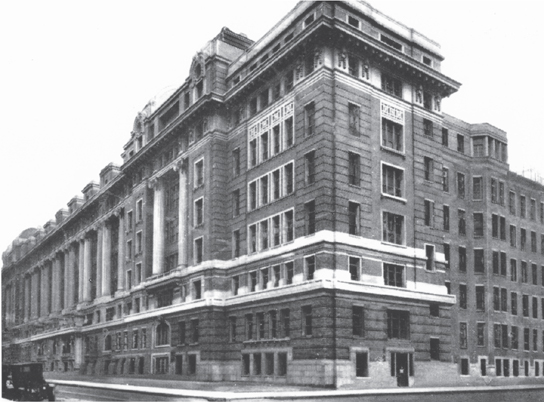
Of all the forms of inequality, injustice in health is the most shocking and most inhumane.
MARTIN LUTHER KING
Introduction
C OOK C OUNTY H OSPITAL , Chicagolands monstrous public hospital, has at least three functions. Its first, and arguably most important role, is political; for party-favored contractors and employees and, not least, as a last resort for poor patients. County (as it came to be known) played a crucial role in the health care delivery system by being the caregiver to the poor, a demographic that isand increasingly soAfrican American, Mexican, Puerto Rican, and immigrant. Finally, County has had a huge role in the training of physicians and other health professionals in the entire region. For more than a century and a half, County has had an immense presence in both the medical scene and the larger political and sociological life of its community. Over the years, no author has succeeded in writing the story of this colossal venture. Several explanations of this failure come to mind, from simple lack of literary skill, to a propensity to write anecdotal, personal diaries. Past authors failed to link Countys fortunes to the worldhistoric medical and social events that emerged in this time frame. To name but a few: the discovery and application of anesthetics; the proof of germ etiologies, followed by description of viruses; antibiotics; immunization; vaccination; and ever more invasive surgeries to heart, lungs, and brain. County, with its vast patient population, was a perfect setting for clinical trials that facilitated many of these advances. Writing the definitive story looked like an impossible task. At least half a dozen authors over the years sought to capture the reality of Cook County Hospital. Overall, many authors displayed an inability to relate its century-and-a-half history to the spectacular transformation of bioscience and medical care in this same period. David Ansell has done it. He has captured the County story vividly and comprehensively. His own career is just the right preparation for this task: four years of training to be an internist in the Countys Department of Medicine, another thirteen years as an attending physician at Cook County Hospital, then ten years of service in the citys major private hospital caring for the poor, Mount Sinai Hospital, and, lately, Medical Director at the prestigious Rush University Medical Center. All this, capped by his selection to serve on the newly-created independent governing board in charge of the Cook County Health and Hospital System. Given the dire straits of our public hospitalsunderfunding, closures, uninsured patientsthis fine book could be a dirge, or a celebration. In any event, it is an authentic and accurate description of a most consequential chapter in our countrys history, and a reflection on our nations failure, unlike the other major western industrialized nations, to make equal access to health care a right for all.
Quentin Young, MD
Chicago, January 2011
PROLOGUE
The Hospital
I N THE SPRING OF 1978, five newly-minted medical school graduates loaded all of our belongings into a twenty-four-foot U-Haul Truck and trekked from Syracuse, New York to Chicago, Illinois to begin internships at Cook County Hospital. A little more than two years prior to our arrival, the hospital was the site of the longest doctor strike in U.S. history when the House Staff Union we were about to join walked out over the intolerable patient care conditions at the hospital. The strike ended when the hospital agreed to some of the patient care improvements that the young doctors demanded. However, seven of the House Staff leaders, doctors no older than we were, were sentenced to Cook County Jail for defying a back-to-work order. The Cook County Hospital we were about to enter was a simmering cauldron of conflict and third-world patient care. We came to County Hospital eyes wide open because of its troubles, not in spite of them. We did not come to County Hospital just to learn to be doctors. We came to County because we believed that health care was a right, not a privilege. That as doctors we had to lead the fight for fairness, equity and universal health care in the U.S. Cook County Hospital was at the front lines of this battle. We encountered roadblocks: an antiquated facility; inept management; underfunding; a corrupt political Machine; patients who were dumped and refused care at other hospitals; our own inadequacies as doctors; patients who died at our doorstep or on our watches.
In the 160 years since its doors first opened, Cook County Hospital has been an institution of epic medical achievements. It was the birthplace of Americas first blood bank. Home of Americas first trauma unit. Its wards had been graced by some of the greatest doctors in the history of American medicine. For a century, until the 1960s, County boasted one of the most competitive internships in the country. It inspired physicians to pay and compete for the privilege of attending there. It was also a troubled institution from its inception and struggled with the same underfunding, poor management and political interference we encountered more than a century later.
By the 1960s a unique set of circumstances placed Cook County Hospital at the center of the national debate about race and health in the U.S. It was simply that Cook County Hospital was in the right place at the right time. As Chicagos black population quadrupled from 250,000 to over one million in the years between 1930 and 1960, racial segregation of neighborhoods and institutions limited black choices for everything from jobs to schools to hospitals. County Hospital became the de-facto hospital for black people in Chicago. By 1960, County was serving the black community and an immigrant Mexican community almost exclusively. In fact, in this decade, eighty percent of Chicagos black births and fifty percent of all black deaths were at County Hospital. This was not just an issue of poverty. Many of the black patrons at County had good paying jobs and health insurance.

